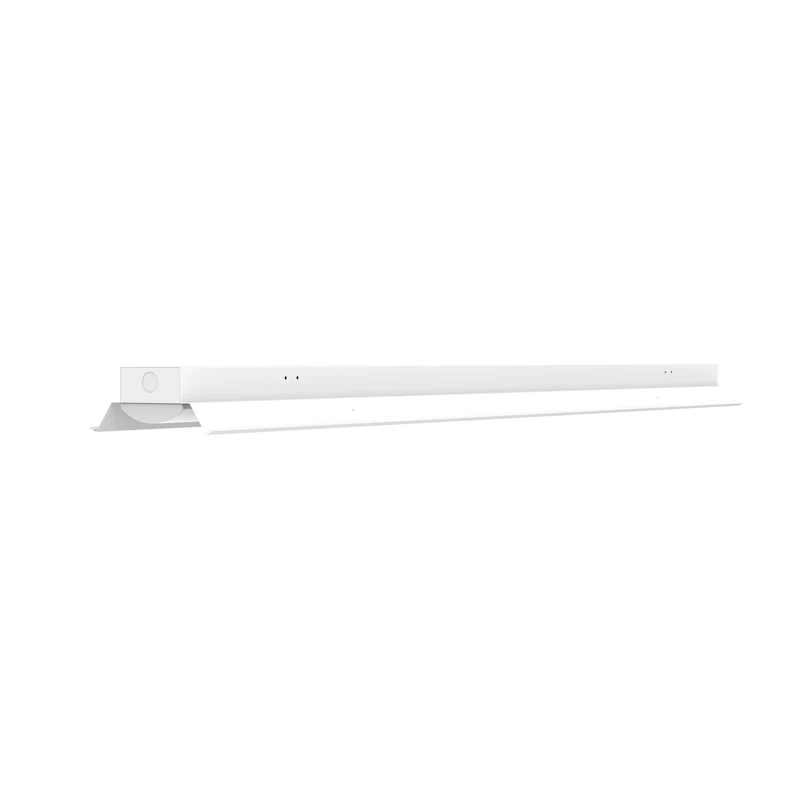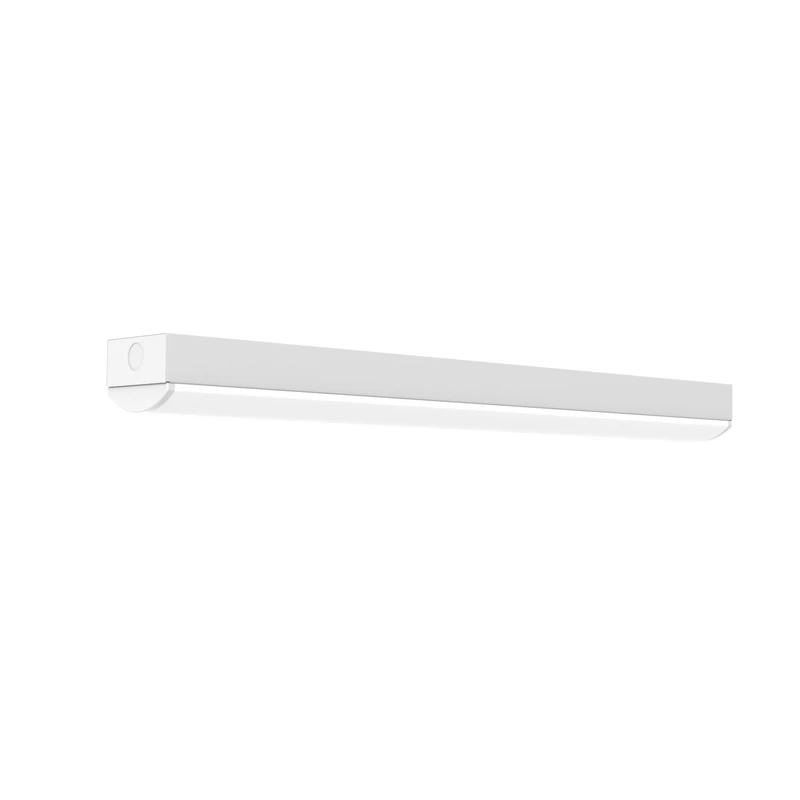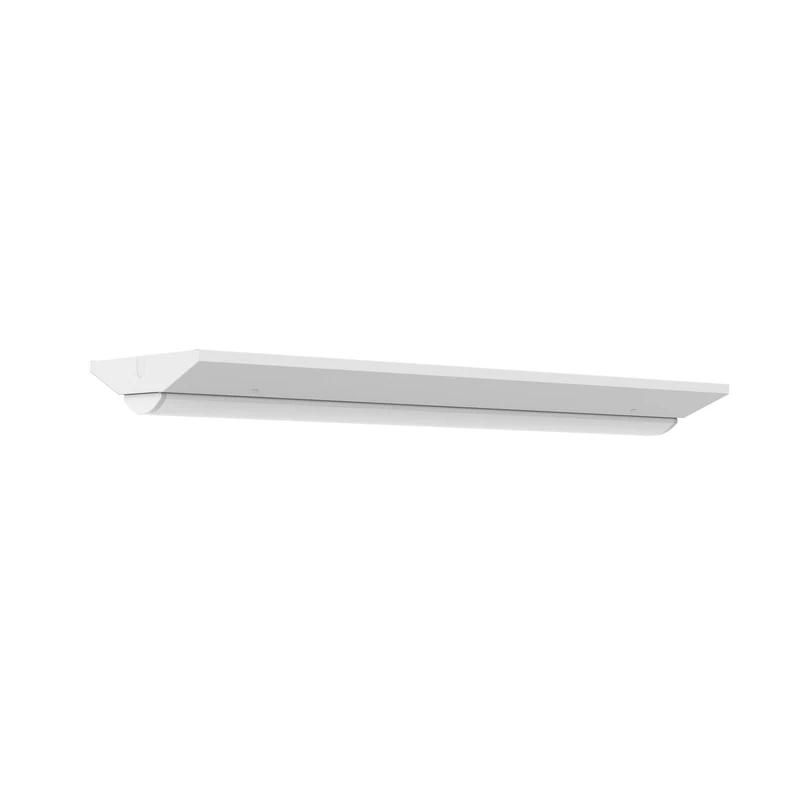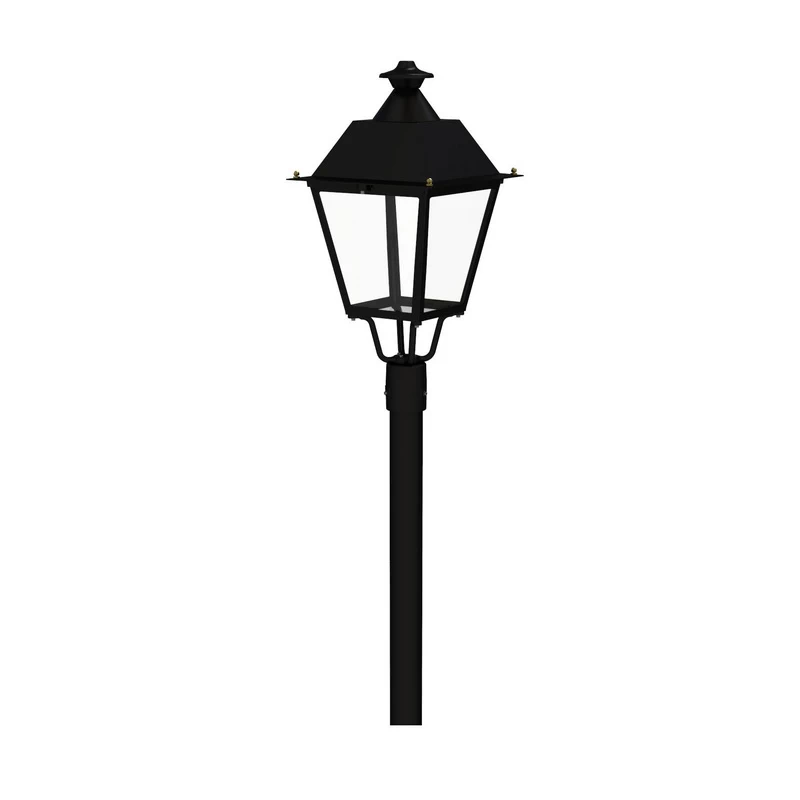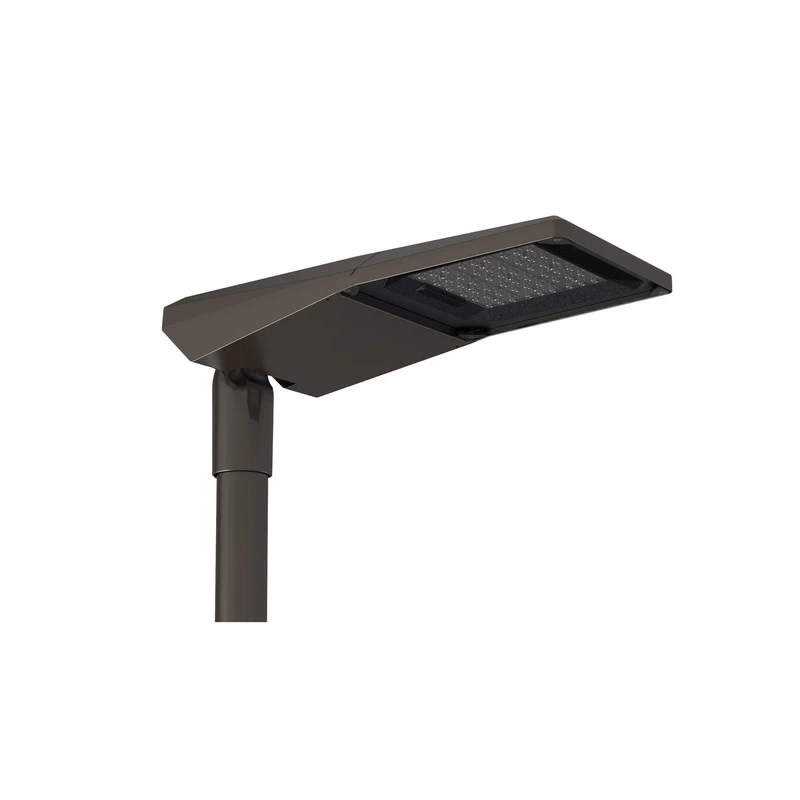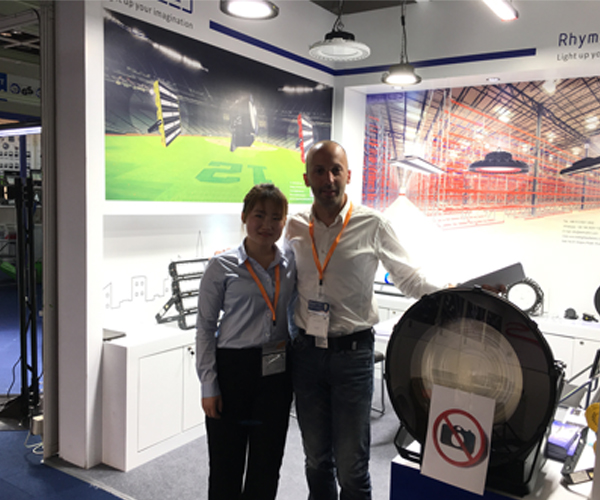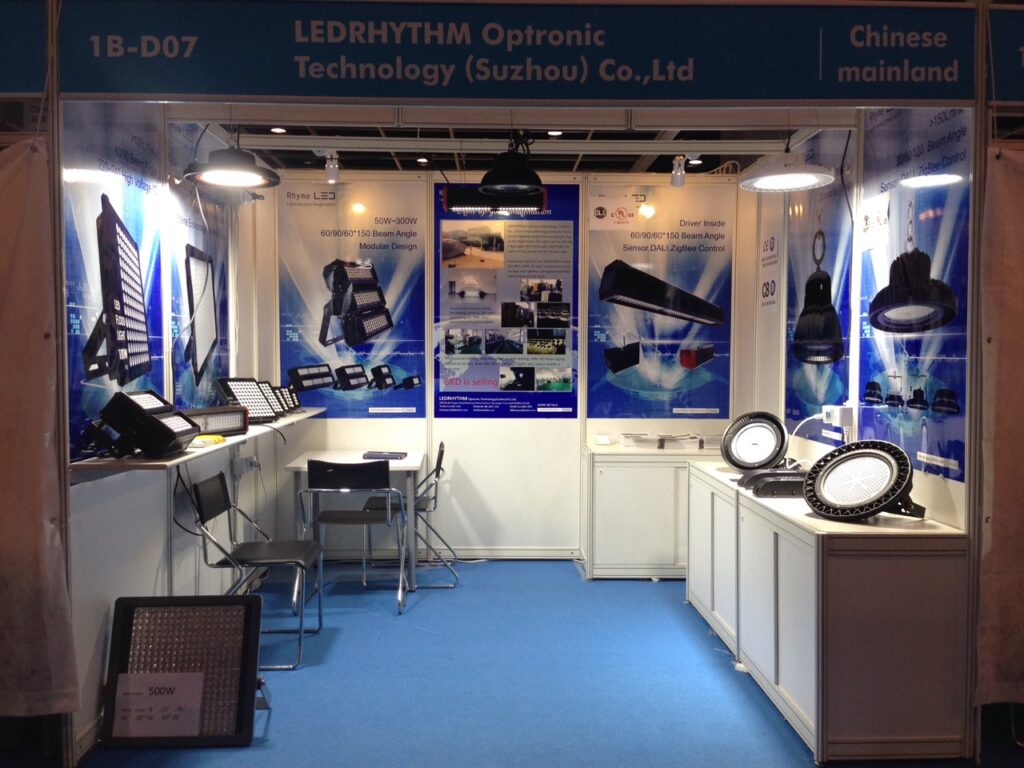Índice
AlternarVisão geral da iluminação embutida
A iluminação embutida é um método de iluminação em que as luzes são total ou parcialmente embutidas no teto, na parede ou no chão. Para o sector comercial e empresarial, a iluminação embutida - também designada por candeeiros de lata, candeeiros de panela ou candeeiros de chapéu alto - é uma opção de iluminação elegante, adaptável e prática. A iluminação embutida, que se destina a ficar embutida na parede ou no teto, oferece uma iluminação subtil que é adequada tanto para iluminação geral como para iluminação de tarefas.


Tipos de iluminação embutida
- Luzes embutidas Os mais comuns, redondos ou quadrados, são embutidos no teto para projetar holofotes ou projectores para baixo, utilizados para iluminação básica ou de realce.
- Luzes de lata O tipo mais convencional são os candeeiros de lata, muitas vezes conhecidos como candeeiros de lata embutidos. Estas luminárias existem em vários diâmetros, incluindo 4 polegadas, 5 polegadas e 6 polegadas, e têm uma caixa cilíndrica que é montada no teto.
- Iluminação de encastrar Canless A iluminação embutida Canless é um substituto contemporâneo que elimina a necessidade de grandes caixas. Estas luzes de perfil fino são ideais para áreas com tectos pouco profundos, uma vez que são mais simples de instalar.
- Luzes de encastrar lineares Trata-se de tiras longas e estreitas, tais como "Luzes de suporte japonesas", que são embutidos no teto e estão disponíveis em vários comprimentos. Proporcionam uma iluminação linear e uniforme e criam um ambiente moderno ou de alta qualidade.
- Candeeiros de encastrar com classificação húmida Perfeita para iluminação embutida no chuveiro e iluminação exterior de intradorso, a iluminação embutida com classificação de humidade é feita para resistir à humidade e é ideal para utilização no interior e no exterior.

Gama de cobertura dos candeeiros de embutir
A cobertura das luzes embutidas é determinada pelo ângulo do feixe, altura da instalação e iluminação. Por exemplo, se a iluminação necessária for mais elevada, então a cobertura de luz tem de se sobrepor.
| Ângulo do feixe | Diâmetro de cobertura | Descrição |
|---|---|---|
| 20° | ~0,85 m / 2,8 pés | Spot, iluminação de realce |
| 40° | ~1,75 m / 5,7 pés | Médio, Iluminação de tarefas |
| 60° | ~2,75 m / 9 pés | Iluminação ampla e ambiente |
| 90° | ~4,2 m / 13,8 pés | Extra largo, inundação suave |
Nota: Quanto mais alta a luminária for instalada, maior será o diâmetro de cobertura; no entanto, o brilho também diminuirá. Para garantir uma iluminação e uma iluminância uniformes, permita geralmente uma sobreposição de luz de 30%-50%.

Vantagens da iluminação embutida
A principal vantagem da iluminação embutida é a sua integração perfeita nos espaços arquitectónicos, resultando numa experiência visual mais simplificada e elegante. Reduz eficazmente o encandeamento e proporciona uma luz mais precisa e uniforme. É particularmente adequada para estilos de design modernos, minimalistas e sofisticados.
| Vantagem | Descrição |
|---|---|
| Aspeto limpo | Luminária oculta na estrutura, apenas a superfície da luz é visível para um aspeto elegante. |
| Espaço melhorado | Sem perda de altura do teto, evita a pressão, o espaço parece aberto. |
| Controlo do brilho | O design antirreflexo reduz a luz direta para maior conforto. |
| Iluminação flexível | Várias vigas e estilos para diferentes necessidades. |
| Conceção integrada | Integra-se na arquitetura e melhora a estética geral. |
| Manutenção fácil | Superfície plana para uma limpeza fácil, sem impacto no teto/paredes. |
Instalação de iluminação embutida
A instalação de iluminação embutida é um processo relativamente profissional, que requer a intervenção de um eletricista ou de um instalador de iluminação profissional, e envolve a modificação do circuito e a abertura de orifícios na estrutura do edifício.
Etapas de instalação
- Planeamento e posicionamento: Confirmar a localização e o número de luminárias de acordo com a planta, evitar obstruções e marcar os pontos de corte exactos.
- Cortes seguros: Desligue sempre a alimentação eléctrica! Utilize ferramentas adequadas para cortar orifícios no teto ou na parede que correspondam exatamente às dimensões da luminária.
- Cablagem e ligações: Passe os fios da fonte de alimentação para cada recorte, permitindo um comprimento suficiente para os fios. Ligue os fios aos cabos da luminária corretamente e isole-os.
- Fixação da luminária: Empurre a luminária para dentro do orifício e fixe-a firmemente com os clipes de mola, clipes ou parafusos incluídos.
- Instalação e colocação em funcionamento: Ligar todas as luminárias para testar se estão a funcionar corretamente. Algumas luminárias oferecem ângulos de feixe ajustáveis.
Custo para instalar iluminação embutida
As principais despesas para a instalação de iluminação embutida são as luzes e os trabalhadores. O custo das luzes é afetado pelo tipo, qualidade, marca e função. O custo dos trabalhadores de instalação é afetado pela complexidade da instalação e pelo número de unidades.
- Custo por luminária: Aproximadamente $50-$100
- Custos de mão de obra: Normalmente, $70-$200 por luz. Os electricistas cobram normalmente $80-$100 por hora, e cada luminária demora em média 2-2,5 horas a instalar.
- Custos adicionais: Materiais, custos de conceção, modificações no teto, sistemas inteligentes podem acrescentar $200+ por luz.
Esquema de iluminação embutida
Princípios de conceção
- Iluminação em camadas: Uma combinação de iluminação básica (iluminação uniforme) e iluminação de realce (destaque de objectos/áreas).
- Evitar o encandeamento: Escolher luzes antirreflexo ou desviar a luz do ponto de vista direto.
- Densidade da iluminação: Utilizar uma grelha uniformemente espaçada ou uma distribuição em grelha escalonada, com iluminação individual para áreas-chave.
Espaçamento da iluminação embutida (Referência)
- Espaçamento entre luzes (m) ≈ 0,5-0,75 × altura do teto (m)
- Distância do teto à parede (m) ≈ Utilize metade do espaçamento entre luzes (0,5-0,75 × altura do teto (m) ×0,5) para evitar que os cantos fiquem demasiado claros ou demasiado escuros.
- Corredor/área longa: dispostos com um espaçamento fixo ao longo da linha central; o espaçamento é grande (não mais de 2-3 m).
Nota: O espaçamento específico também deve ter em conta o ângulo do feixe de luz, o fluxo luminoso e a iluminação necessária.

Layouts para cada área
- Sala de estar: Grelha ou grelha escalonada (espaçamento de 1,2-1,8 m), utilizada com candeeiros de pé.
- Cozinha: Densamente distribuído acima da bancada (~1-1,5 m de distância), com reforço no fogão/lava-loiça.
- Casa de banho: Utilize iluminação de trabalho sobre o toucador e luzes embutidas no duche.
- Quarto de dormir: Escolha luzes embutidas brancas suaves para um ambiente tranquilo.
- Centros comerciais: Grelha ou grelha escalonada, espaçamento de 2-3m.
Lâmpadas de embutir com canhão vs. lâmpadas de embutir sem canhão
| Caraterística | Luzes de lata | Luzes de encastrar sem canhão |
|---|---|---|
| Instalação | Requer mais esforço | Fácil e rápido de instalar |
| Perfil | Caixa volumosa no interior do teto | Design fino e de baixo perfil |
| Custo | Geralmente menos dispendioso à partida | Custo inicial mais elevado, mas mais moderno |
| Eficiência energética | Varia consoante a lâmpada utilizada | Sempre LED para máxima eficiência |

A iluminação embutida pode ser utilizada no interior e no exterior
Aplicações interiores
- Iluminação de realce: Realçar detalhes arquitectónicos, obras de arte ou plantas.
- Iluminação de tarefas: Concentre-se em espaços específicos, como balcões de cozinha ou secretárias.
Aplicações exteriores
- Iluminação do intradorso: Utilize luzes embutidas à prova de água para iluminar as áreas exteriores.
- Iluminação paisagística: Iluminar jardins ou passadiços com guarnições direcionais.
Conclusão
A iluminação embutida é uma opção clássica e adaptável a ambientes empresariais e comerciais. A seleção das luminárias de encastrar ideais pode mudar completamente o seu espaço, quer esteja a remodelar a sua sala de trabalho ou a melhorar os seus espaços exteriores.
As pessoas também perguntam
Quais são os candeeiros embutidos que consomem menos energia?
A escolha mais eficiente em termos energéticos são as luzes embutidas LED.
É possível colocar luzes embutidas no exterior?
Sim, mas certifique-se de que são classificados como resistentes à humidade e às intempéries.
Como é que posso mudar as lâmpadas dos meus candeeiros embutidos?
Desligue a eletricidade, retire a guarnição e substitua a lâmpada.
É melhor uma cobertura de luz embutida mais ampla?
Obviamente que não. Embora uma cobertura de luz embutida mais ampla tenha vantagens, como menos luminárias e uma experiência visual mais suave, tem ainda muitos inconvenientes.
Áreas diferentes requerem requisitos de iluminação diferentes, dependendo da sua utilização prevista, da dimensão do espaço e do impacto visual.
Existe uma calculadora universal para iluminação embutida?
Não existe uma calculadora de iluminação embutida verdadeiramente universal, porque a disposição ideal depende do tamanho da divisão, da altura do teto, do ângulo do feixe, da saída de lúmen e do objetivo da iluminação. No entanto, é possível utilizar uma fórmula básica para uma estimativa:
Número de luzes ≈ (Área da divisão (pés quadrados) × Nível de lux) / Lúmens por luz
A que é que devo prestar atenção ao adicionar iluminação embutida?
- Verifique a estrutura do teto para confirmar que pode acomodar as luminárias para evitar problemas de instalação.
- Calcule se a cablagem existente pode suportar o consumo total de energia dos novos aparelhos e, se necessário, acrescente circuitos adicionais.
- Determine o número e o espaçamento das luminárias com base nos requisitos de área, altura do teto e ângulo do feixe.
- Escolha luminárias adequadas ao seu teto.
- Cumpra os regulamentos de proteção contra incêndios e humidade e os códigos eléctricos locais.

